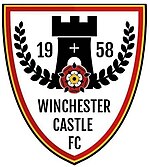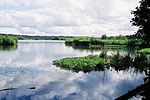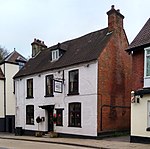St Catherine's Hill, Hampshire

St. Catherine's Hill is a chalk downland hill and 43-hectare (110-acre) biological Site of Special Scientific Interest on the outskirts of Winchester in Hampshire, England. It is owned by Winchester College but open to the public. It is managed by Hampshire and Isle of Wight Wildlife Trust, and topped by an Iron Age hillfort, a scheduled monument. In the Black Death, plague pits were dug in the dry valley on the south side of the hill. In the Early modern period, a mizmaze was cut on the hilltop. Winchester College football used to be played on the hill; in an old custom, members of the college assemble on the hill every year, early in the morning. Geologically, the hill is part of a local anticline in the chalk, which is of Turonian age in the Upper Cretaceous. The local ecology is dominated by the chalk, which results in a thin dark soil, a rendzina, which favours lime-loving plants from orchids to bellflowers.
Excerpt from the Wikipedia article St Catherine's Hill, Hampshire (License: CC BY-SA 3.0, Authors, Images).St Catherine's Hill, Hampshire
M3, Winchester Twyford
Geographical coordinates (GPS) Address Nearby Places Show on map
Geographical coordinates (GPS)
| Latitude | Longitude |
|---|---|
| N 51.046388888889 ° | E -1.3105555555556 ° |
Address
Saint Catherine's Hill Nature Reserve
M3
SO21 1PL Winchester, Twyford
England, United Kingdom
Open on Google Maps











